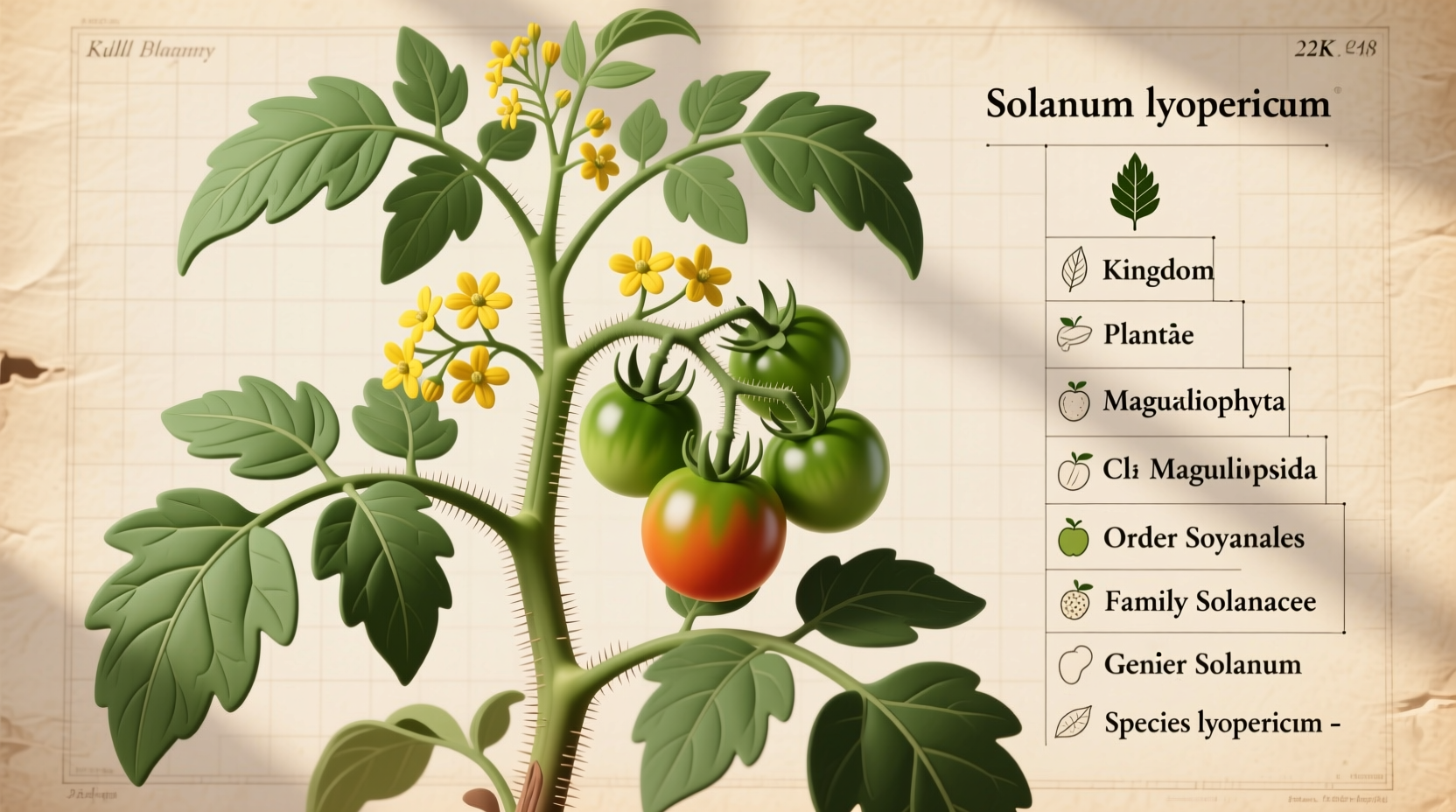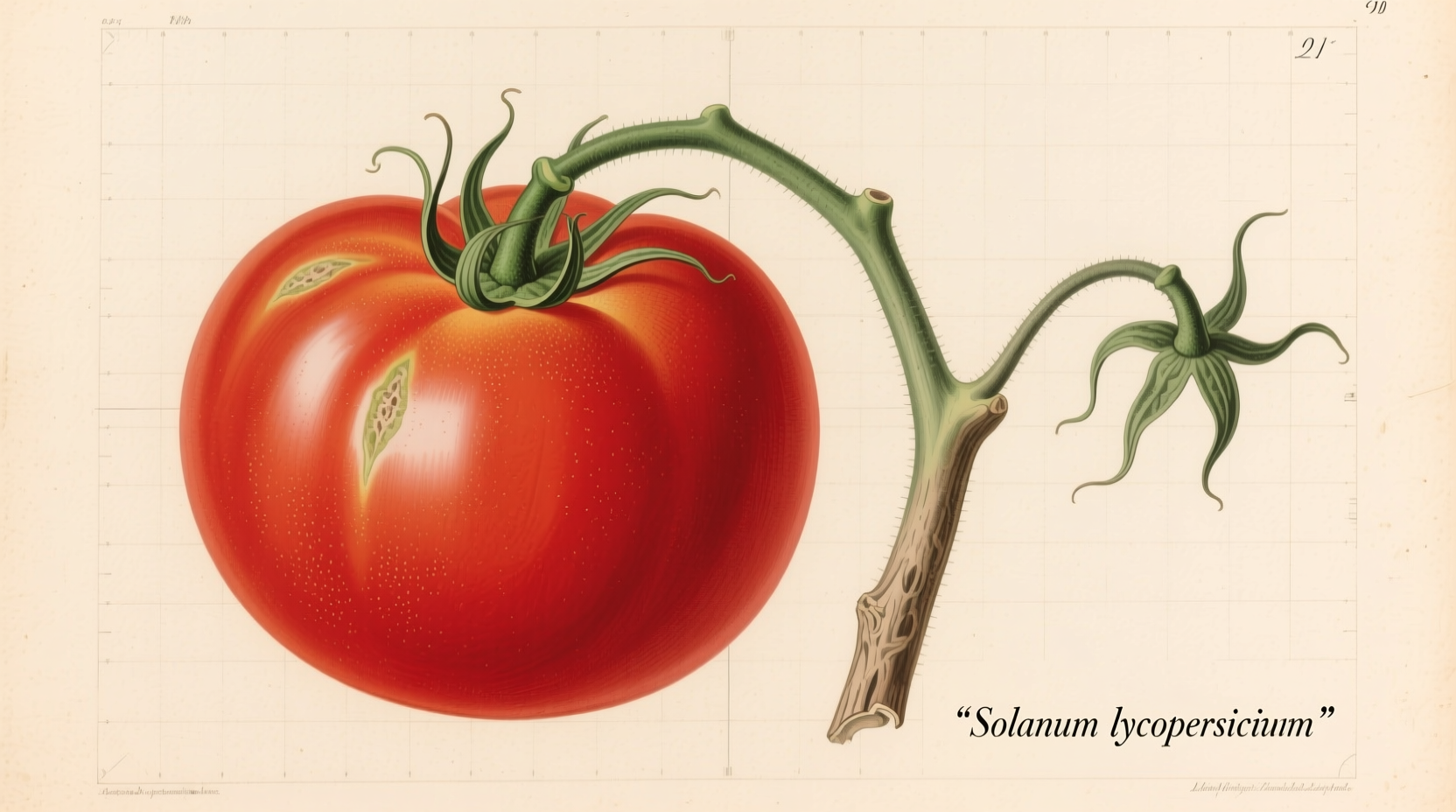Understanding tomato solanum lycopersicum isn't just academic jargon—it directly impacts how you select varieties, manage diseases, and appreciate this garden staple's evolutionary journey. When you recognize tomatoes as members of the nightshade family alongside potatoes and eggplants, you gain practical insights that improve cultivation success and deepen your appreciation for this versatile fruit.
Decoding the Scientific Name: More Than Just Latin Words
The term Solanum lycopersicum reveals critical information about your tomato plants. Solanum (from Latin "solan," meaning comfort or relief) identifies the genus containing over 1,500 species including potatoes (Solanum tuberosum) and eggplants (Solanum melongena). Lycopersicum (from Greek "lykos" meaning wolf and "persicon" meaning peach) references the historical belief that tomatoes were poisonous "wolf peaches."
This reclassification from Lycopersicon esculentum to Solanum lycopersicum in 2006 wasn't arbitrary. Genetic sequencing confirmed tomatoes share approximately 85% DNA similarity with potatoes, making their separation into different genera scientifically inaccurate. This matters because understanding these genetic relationships helps predict disease vulnerabilities—tomatoes and potatoes share susceptibility to late blight (Phytophthora infestans), explaining why crop rotation between these plants fails to prevent disease transmission.

Tomato Taxonomy Timeline: How Classification Evolved
Tomato classification has undergone significant changes as scientific understanding advanced. This timeline shows key milestones in our understanding of Solanum lycopersicum:
| Year | Classification | Scientific Basis |
|---|---|---|
| 1753 | Solanum lycopersicum (Linnaeus) | Morphological characteristics |
| 1768 | Lycopersicon esculentum (Mill.) | Perceived differences from Solanum |
| 1968 | Lycopersicon esculentum (Dun.) | Chromosomal evidence |
| 2006 | Solanum lycopersicum (current) | Genomic sequencing (95% DNA match with Solanum) |
According to research published in the Annals of Botany, the reclassification was driven by molecular phylogenetic studies showing tomatoes share a more recent common ancestor with potatoes than previously believed. The Solanaceae family's complex evolutionary history, documented by the Royal Botanic Gardens, Kew (kew.org), demonstrates why precise classification matters for understanding plant relationships.
Practical Implications for Gardeners and Farmers
Knowing your tomato's scientific identity directly impacts cultivation practices. When selecting varieties, understanding that all cultivated tomatoes belong to Solanum lycopersicum helps you interpret breeding information more accurately. For example:
- Disease management: Tomatoes share Verticillium wilt susceptibility with other Solanum species, making crop rotation with non-Solanum plants essential
- Hybridization potential: Wild relatives like Solanum pimpinellifolium (currant tomato) can cross with cultivated varieties for improved disease resistance
- Soil requirements: Solanum species generally prefer slightly acidic soil (pH 6.2-6.8), unlike many other garden vegetables
The USDA Agricultural Research Service notes that recognizing tomatoes as Solanum species helps predict nutrient requirements—particularly their need for consistent calcium to prevent blossom end rot, a vulnerability shared with other nightshades (ars.usda.gov).
When Scientific Names Matter Most
While "tomato" suffices for grocery shopping, the Solanum lycopersicum designation becomes crucial in specific contexts:
- Seed saving: Ensuring genetic purity requires precise species identification
- Research: Scientific literature uses the accepted binomial nomenclature
- Disease control: Extension services provide species-specific management advice
- Regulatory compliance: Import/export regulations reference scientific names
University agricultural extensions consistently emphasize using the correct scientific name when seeking diagnostic help for plant problems. A Cornell University study found that 38% of misdiagnosed tomato issues stemmed from incorrect species identification when consulting resources.
Debunking Common Tomato Classification Myths
Several misconceptions persist about tomato taxonomy that can mislead gardeners:
- Myth: "Heirloom tomatoes belong to a different species"
Fact: All heirloom varieties are Solanum lycopersicum—they differ only in cultivar, not species - Myth: "Cherry tomatoes are a separate species"
Fact: Size variations result from selective breeding within S. lycopersicum - Myth: "Tomatoes are genetically modified to be in the Solanum genus"
Fact: The reclassification reflects improved scientific understanding, not genetic modification
Understanding these distinctions prevents unnecessary concerns about plant compatibility and helps gardeners make informed decisions about variety selection and cultivation practices.
Applying Botanical Knowledge to Your Garden
Transform your tomato growing success by applying this scientific knowledge:
- Rotation planning: Rotate tomatoes with non-Solanum crops like beans or brassicas (minimum 3-year rotation)
- Variety selection: Choose disease-resistant cultivars with known resistance genes (e.g., "VFNT" codes indicate resistance to specific pathogens)
- Soil management: Maintain consistent moisture and calcium levels to prevent physiological disorders
- Pest monitoring: Watch for pests that target multiple Solanum species (e.g., Colorado potato beetle)
By recognizing tomatoes as Solanum lycopersicum, you're better equipped to implement science-based growing practices that maximize yield and minimize problems. This knowledge transforms you from a casual grower into an informed cultivator who understands the biological principles behind successful tomato production.











 浙公网安备
33010002000092号
浙公网安备
33010002000092号 浙B2-20120091-4
浙B2-20120091-4